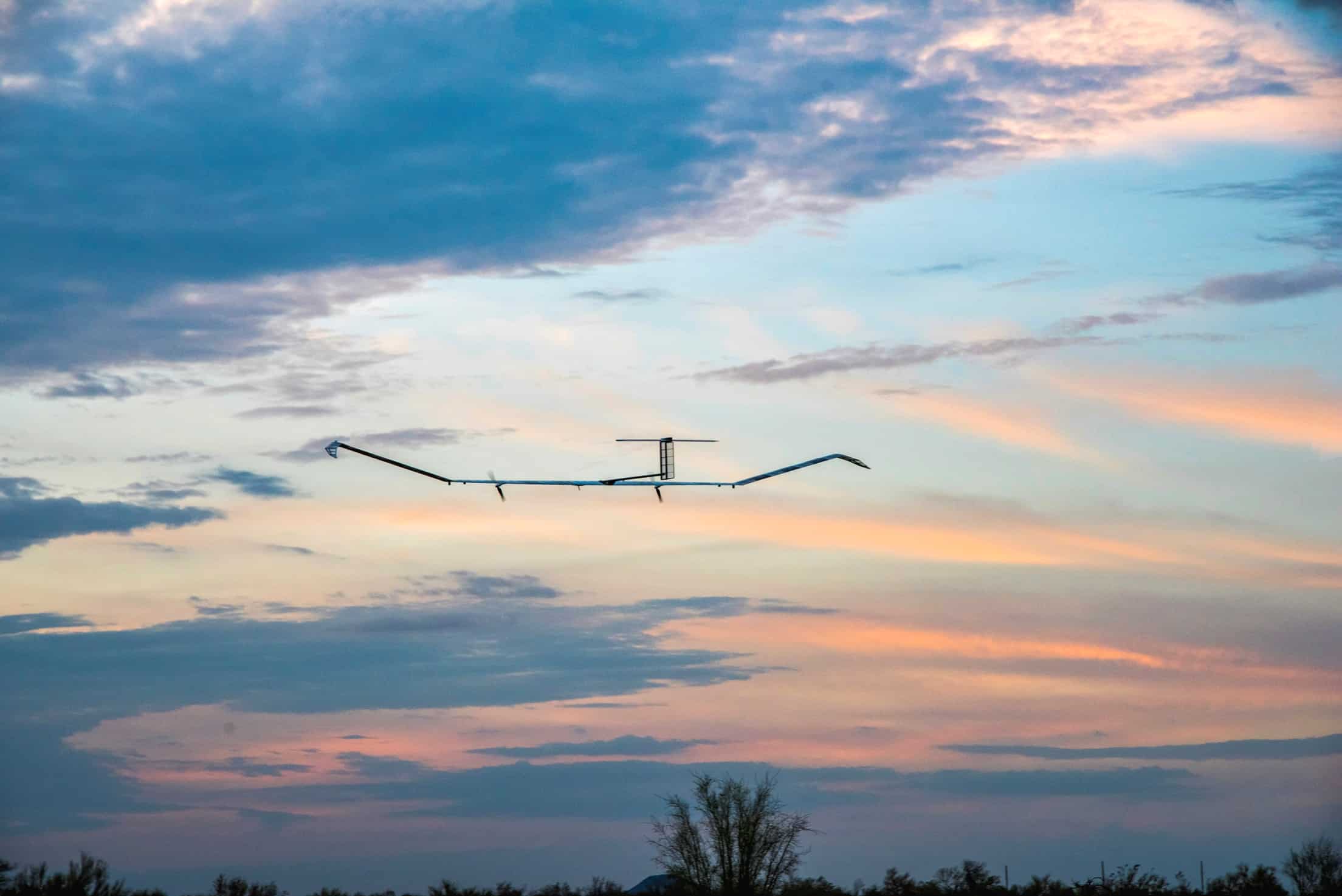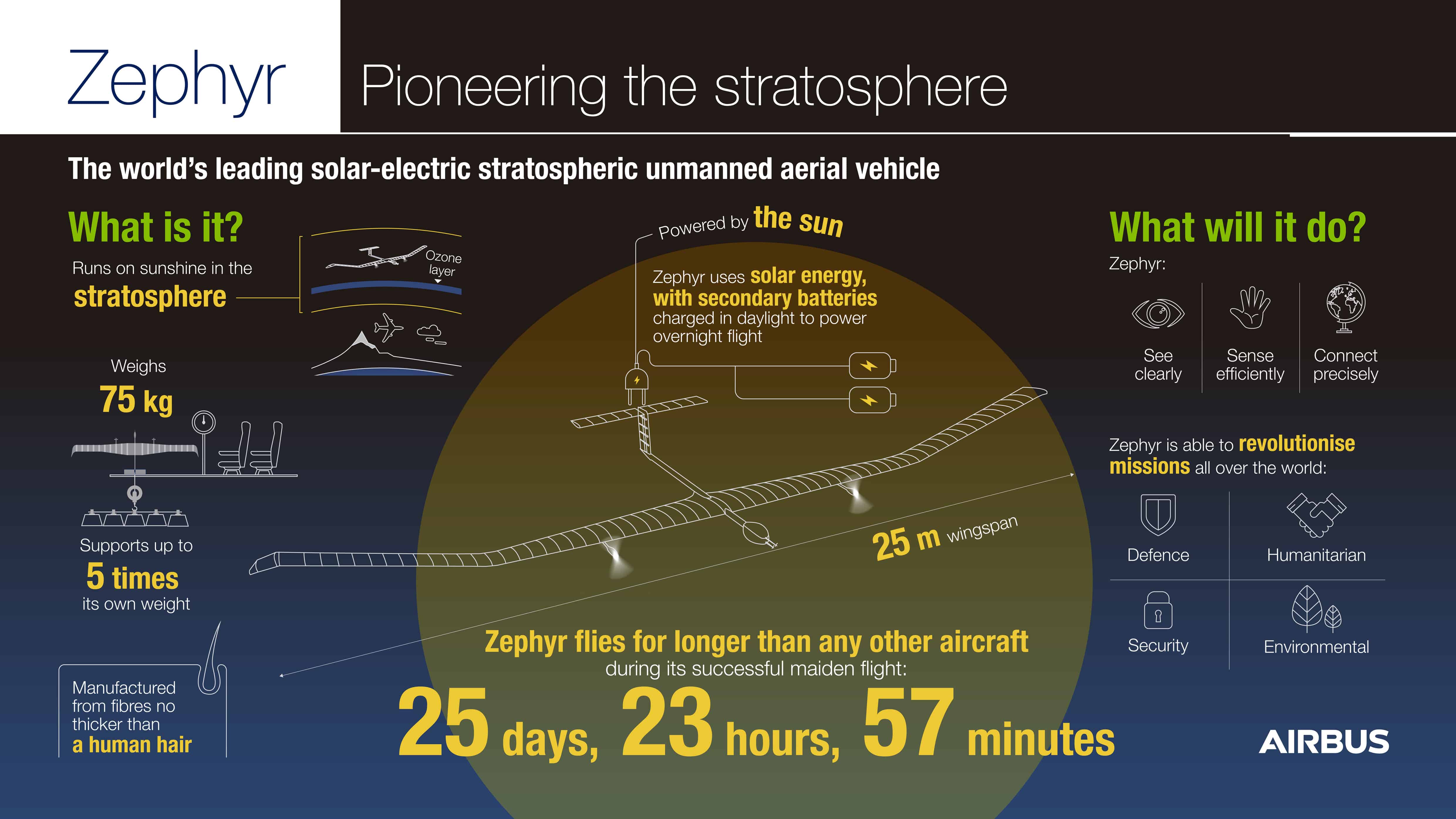
Taking off on 11th July in Arizona, USA, the unmanned Zephyr S HAPS (High Altitude Pseudo-Satellite) was airborne for 25 days, 23 hours and 57 minutes, a duration Airbus hopes to have confirmed as a world record in the coming days. Zephyr employs a 25m wingspan covered in solar panels to power its flight and charge its lithium-sulphur batteries, allowing it to cruise in the stratosphere for extreme lengths of time. The previous record was achieved by an earlier prototype in the Zephyr programme – the Zephyr 7 - achieving over 14 days of continuous flight.
“This very successful maiden flight represents a new significant milestone in the Zephyr programme, adding a new stratospheric flight endurance record which we hope will be formalised very shortly,” said Jana Rosenmann, head of Unmanned Aerial Systems at Airbus. “We will in the coming days check all engineering data and outputs and start the preparation of additional flights planned for the second half of this year from our new operating site at the Wyndham airfield in Western Australia.”

According to Airbus, the current version of the aircraft weighs just 75kg and is manufactured from carbon fibres thinner than a human hair. Zephyr's extended flight capabilities make it a unique proposition for intelligence, surveillance and reconnaissance (ISTAR) missions, and three aircraft are already in service with the RAF. The programme was initially started by Qinetiq back in 2003, with demonstration flights carried out for the US military in 2008. In 2013, the programme was sold to EADS Astrium, which would go on to become part of Airbus Defence and Space.




Red Bull makes hydrogen fuel cell play with AVL
Formula 1 is an anachronistic anomaly where its only cutting edge is in engine development. The rules prohibit any real innovation and there would be...